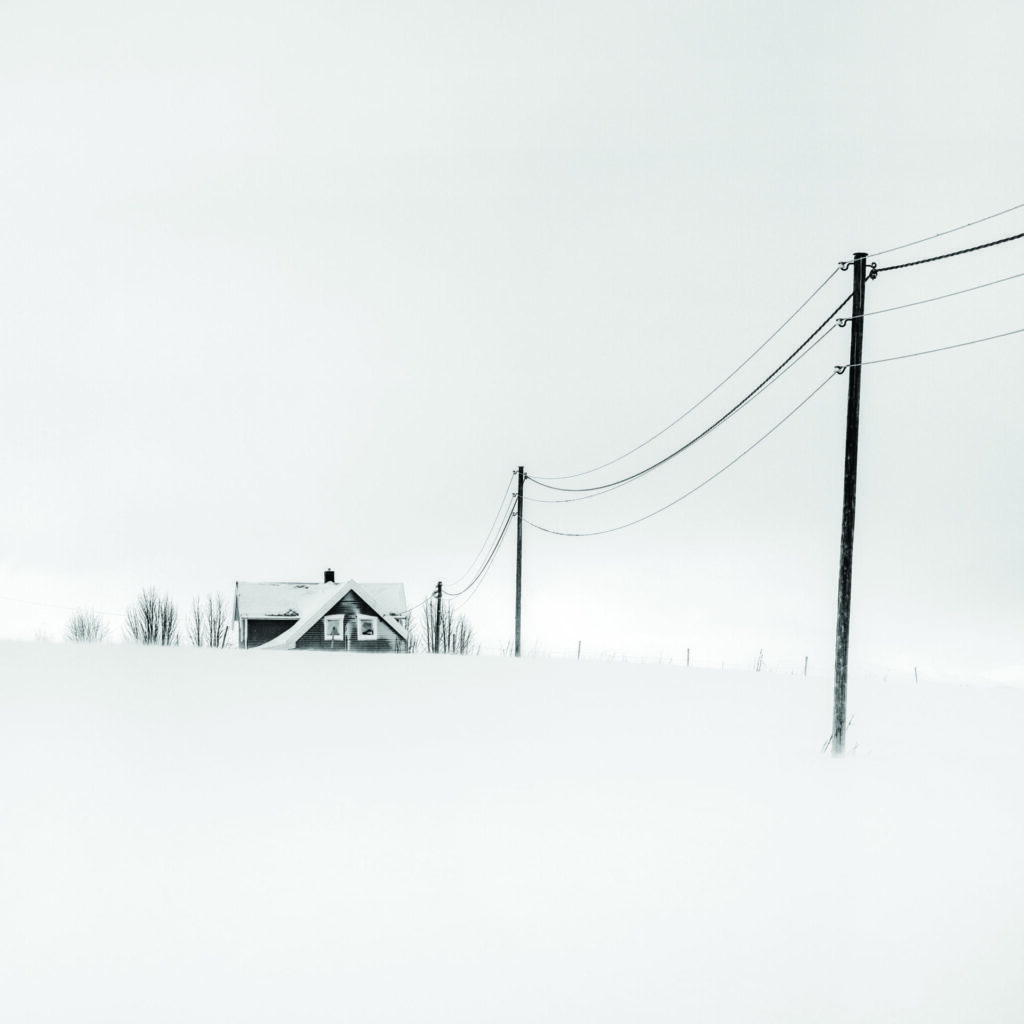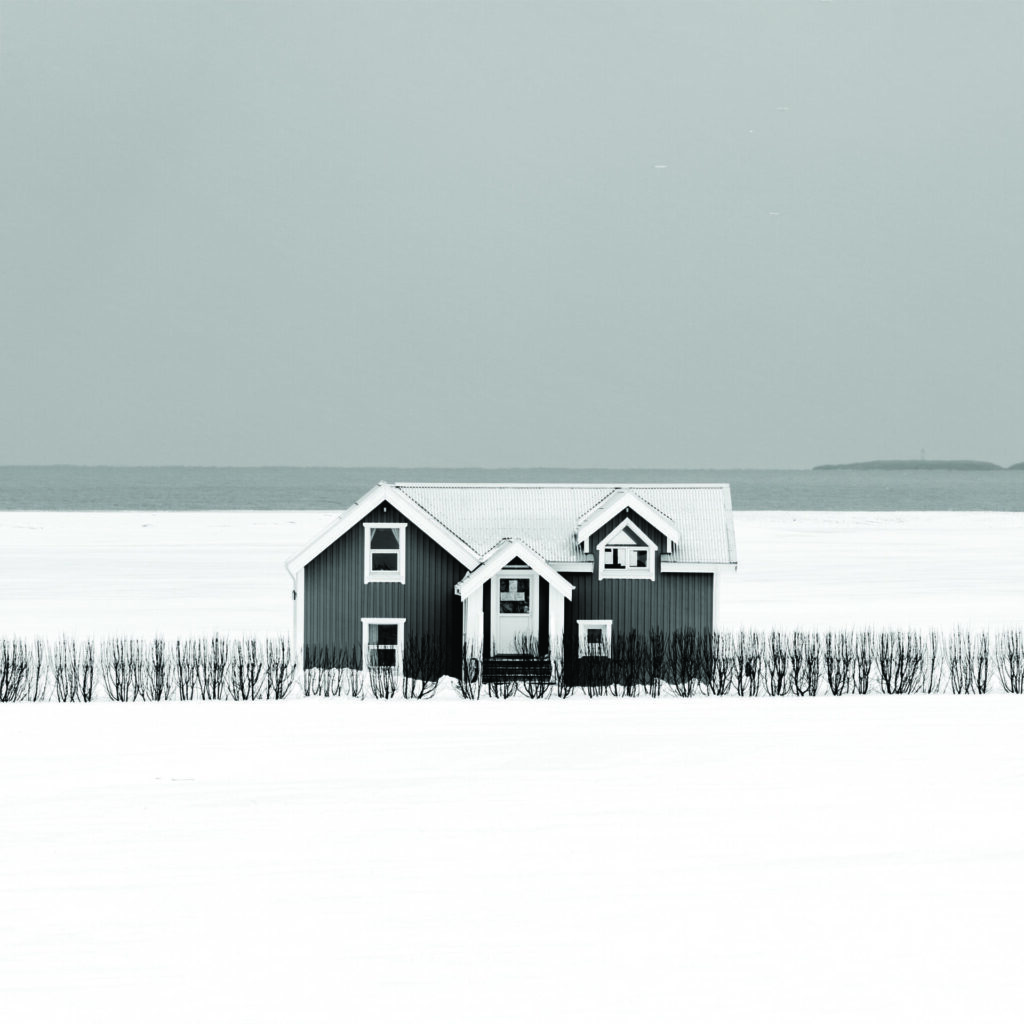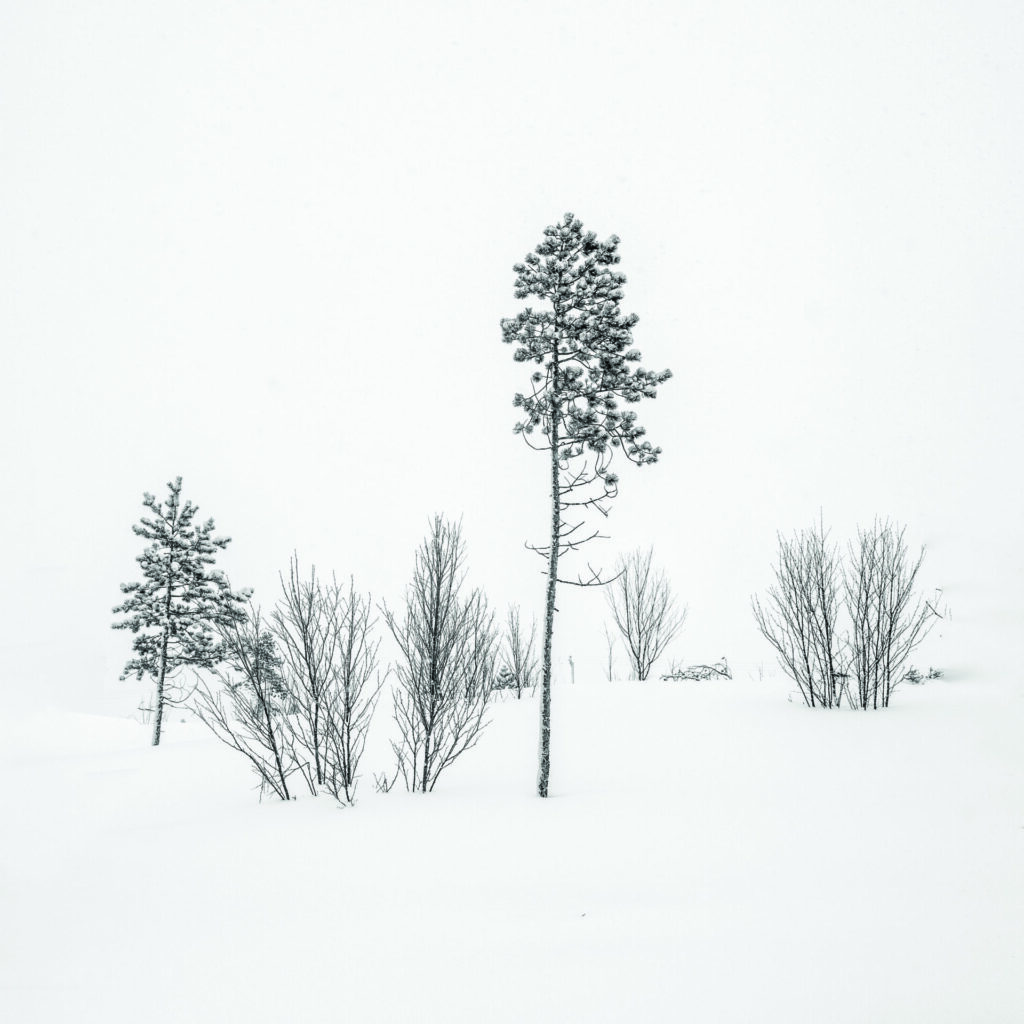With its snow-covered landscapes, isolated details and stark contrasts, winter is the perfect season to shoot minimalist images. Lee Frost offers his top tips for making much less go a lot further.
All images © Lee Frost

Image: Senja, Norway
1. Where and when to shoot
Ideally, you need fresh snow blanketing the landscape. I shoot most of my minimalist winter landscapes in Iceland and Norway, where heavy snowfall is pretty much guaranteed, so if you’re thinking about a trip to Iceland, I’d definitely recommend going between January and March. In the UK, it’s anyone’s guess from one year to the next if we’ll get snow, although the further north and the higher you go, the greater the probability that you will. Upland regions of Yorkshire, Derbyshire, Cumbria and Northumberland are good bets. Snow in the Scottish Highlands is pretty much a given. I also favour overcast days, so the sky is plain and simple – flat grey sky and crisp white snow creates a perfect backdrop. Cloudless blue sky can work well too, but the light is much harsher, whereas on overcast days the light is very soft. You don’t really want strong shadows, as they make the compositions more complicated.

Image: Gerdi, Iceland
2. All square
This is purely down to personal choice, but I almost always crop my minimalist landscapes to a square format. It enhances the sense of balance and simplicity and makes the images easier on the eye. The rectangular format is dynamic whereas the square format is symmetrical and sedate. I also tend to position the key element or elements centrally in the composition so the square format frames them and leads the eye directly to them. You can set your camera’s aspect ratio to 1:1 if you like, so you get crop marks in the viewfinder and on the preview image to aid composition. However, with some cameras the images are cropped to a square automatically when you open the Raw file, so remember to set the aspect ratio back to full when you don’t want or need the square crop.

Image: Sommarøy, Norway
3. Subject matters
There are no hard and fast rules here – it’s really whatever catches your eye. After snowfall, I’d recommend just heading out to see what you can find. Parks and large public gardens can be good hunting grounds, as they’re laid out in a regimented fashion, so you’ll often find avenues of trees, neatly clipped hedges or topiary, walls and fences all standing out starkly against the freshly fallen snow. Stately homes and National Trust gardens are a good bet. Out in the countryside, look for fence lines arching over hills or stretching into the distance, single trees against a snowy backdrop and lines of telegraph posts stretching into the distance. Churches with tall steeples, monuments and even garden ornaments can work well too.
For more tips, check out issue 286.
